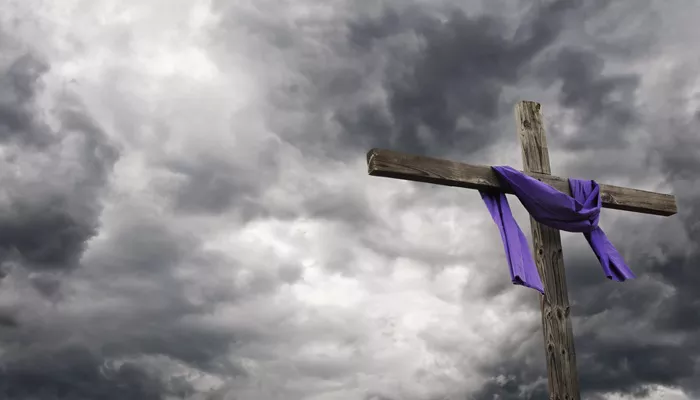Lent is a significant period in the Catholic Church, observed by millions around the world as a time of reflection, penance, and preparation for Easter. This solemn season not only fosters spiritual growth but also deepens the connection between believers and their faith. In this article, we will explore the meaning of Lent, its duration, and most importantly, when Lent ends in the Catholic tradition.
The Meaning of Lent
Lent is a 40-day liturgical season that commemorates the time Jesus spent fasting in the desert before his public ministry. This period serves as a time of reflection, prayer, and self-denial, mirroring the trials that Jesus endured. The term “Lent” is derived from the Old English word lencten, which means “spring,” signifying a season of renewal and rebirth.
Lent begins on Ash Wednesday, which falls 46 days before Easter Sunday. The 40 days of Lent do not count the Sundays, as these are considered “mini-Easters” celebrating the resurrection of Jesus. The season culminates in Holy Week, which includes significant events such as Palm Sunday, Maundy Thursday, Good Friday, and the Easter Vigil, leading to the joyous celebration of Easter Sunday.
The Significance of the 40 Days
The 40 days of Lent symbolize a period of spiritual purification and reflection. Throughout the Bible, the number 40 is often associated with periods of testing and preparation. For instance:
Moses spent 40 days on Mount Sinai receiving the Ten Commandments (Exodus 34:28).
Elijah journeyed for 40 days and nights to Mount Horeb (1 Kings 19:8).
Jesus fasted for 40 days in the desert (Matthew 4:1-2).
These examples emphasize the importance of prayer, sacrifice, and reliance on God during challenging times. Lent encourages Catholics to embrace these principles in their own lives through acts of penance, prayer, and charitable deeds.
The Observance of Lent
During Lent, Catholics are called to engage in various practices that deepen their spiritual lives. Common observances include:
1. Fasting and Abstinence
The Catholic Church encourages fasting as a form of penance. Traditionally, Catholics aged 18 to 59 are required to fast on Ash Wednesday and Good Friday, limiting their food intake to one full meal and two smaller meals that together do not equal a full meal.
Abstinence, which involves refraining from certain foods (most notably meat), is required on Ash Wednesday, Fridays during
Lent, and certain other days throughout the year. This practice serves as a reminder of Christ’s sacrifice and a way to cultivate self-discipline.
2. Prayer
Prayer is a cornerstone of Lent, allowing believers to deepen their relationship with God. Many Catholics choose to increase their prayer life during this season by attending daily Mass, participating in the Stations of the Cross, or engaging in personal prayer and meditation.
3. Almsgiving
Acts of charity and service to others are central to Lenten observance. Catholics are encouraged to give to those in need, whether through monetary donations, volunteering time, or offering support to local charities. This practice helps foster a spirit of generosity and compassion.
When Does Lent End?
Lent officially concludes on Holy Saturday, the day before Easter Sunday. However, it’s essential to understand the events leading to this conclusion:
The Timeline of Lent
Ash Wednesday: Lent begins with Ash Wednesday, marked by the imposition of ashes, symbolizing repentance and mortality.
Lenten Season: The 40 days of Lent (excluding Sundays) follow, filled with opportunities for prayer, fasting, and almsgiving.
Holy Week: The final week of Lent, known as Holy Week, is a time of profound significance. It includes:
Palm Sunday: Commemorating Jesus’ triumphant entry into Jerusalem.
Maundy Thursday: Observing the Last Supper and Jesus’ command to love and serve one another.
Good Friday: Reflecting on the crucifixion and death of Jesus.
Holy Saturday: A day of vigil and waiting for the resurrection.
The Transition to Easter
On Holy Saturday, the church prepares for the celebration of Easter. The Easter Vigil, celebrated after sunset on Holy Saturday, marks the end of Lent and the beginning of the Easter season. During this vigil, the church transitions from darkness to light, symbolizing the resurrection of Christ. The liturgy includes the blessing of the fire, the lighting of the Paschal candle, and the renewal of baptismal promises.
Summary of Dates
Start of Lent: Ash Wednesday (date varies each year)
End of Lent: Holy Saturday (day before Easter Sunday)
The Significance of Easter
The end of Lent leads into the celebration of Easter, the most important feast in the Christian calendar. Easter celebrates the resurrection of Jesus from the dead, signifying victory over sin and death. It is a time of joy, hope, and renewal, as Christians believe that through Christ’s resurrection, they are offered the promise of eternal life.
The Easter Season
Easter Sunday marks the beginning of the Easter season, which lasts for 50 days, culminating in Pentecost. This time is characterized by joy and celebration, where the faithful are called to reflect on the significance of the resurrection and its implications for their lives.
Conclusion
Lent is a profound and meaningful season in the Catholic Church, offering believers an opportunity to grow in faith and deepen their relationship with God. As we have explored, Lent ends on Holy Saturday, transitioning into the joyous celebration of Easter. This period of penance, prayer, and almsgiving allows Catholics to prepare their hearts and minds for the central mystery of their faith—the resurrection of Jesus Christ.
By understanding the significance of Lent and its conclusion, believers can fully appreciate the transformative power of this sacred season. It serves as a reminder of the hope and renewal that comes through Christ’s sacrifice, encouraging all to embrace a life of faith, love, and service to others.
Related topics:

